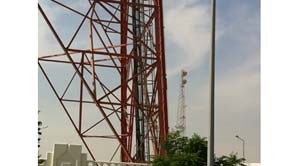As Qatar prepares to host the 2022 FIFA World Cup, the countrys state broadcaster Qatar Media Corporation, has started modernising its broadcast infrastructure in order to give the best viewing experience to football fans across the world. We look at one of the recent DVB installations in the country Qatar Media Corporation (QMC) has started […]
As Qatar prepares to host the 2022 FIFA World Cup, the countrys state broadcaster Qatar Media Corporation, has started modernising its broadcast infrastructure in order to give the best viewing experience to football fans across the world. We look at one of the recent DVB installations in the country
Qatar Media Corporation (QMC) has started upgrading its broadcast network in the run-up to the 2022 soccer World Cup using Rohde & Schwarzs DVB-T2 technology. The total estimated cost of the project is USD 14m.

According to Reem Al Lanjawi, Project Engineer at QMC: Hosting the FIFA World Cup 2022 gives Qatar a fantastic opportunity to showcase the best of the Arab region and, as the country’s state broadcaster, we have a pivotal role to play in this success. We are investing heavily in our technical infrastructure to ensure that we deliver an unforgettable experience to spectators.
The objective of the project was to enable the end user, QMC, to have countrywide coverage for fixed outdoor reception for the DVB-T2 system.
The end user required two multiplexes one for channel 23 and another for channel 25. Both the multiplexes have been designed for five HD programmes.
In addition, a new transmitter site for FM and DAB transmissions was to be built.
Qatar-based systems integrator Media Group International (MGI) was awarded the project in Q3 2013. MGI is implementing the project in partnership with Rohde & Schwarz.
Al Lanjawi comments: Our decision to award the contract for upgrading QMC’s transmission infrastructure to MGI that offered Rohde & Schwarz equipment, was based on two main factors the company’s reputation for delivering excellent technical results within budget and within a tight timeframe, and its ability to offer technical after sales support.
In order to build the two DVB-T2 multiplexes, Rohde & Schwarz delivered new, fully redundant IP-based R&S AVHE100 headends. The upgrade of the transmitters and building of a new transmission station has already begun.
The project is being executed in three parts: The first part comprises DVB-T2 upgrade of the existing UHF transmitters from analogue to digital TV transmission. It will also support the latest monitoring standards from Rohde & Schwarz.
Part two of the project involves optical fibre transport network equipment to transport and monitor various types of signals to and from Doha, using optical fibre connectivity from QTEL (Qatar’s telco operator).
The required optical fibre network equipment will transport the ASI transport streams for DVB-T2, L&R analogue stereo for FM transmission and DAB+ ensemble ETI stream for DAB+ transmission.
The final part of the project involves the installation and commission of a new mast, designed as per international standards. The guyed mast can withstand 160 km/h in order to install the FM antenna system, UHF DVBT-2 transmitters and DAB+ antenna system with all the related equipment.
Rohde & Schwarzs fully redundant I-based AVHE100 headends allow QMCs existing transmitters to support DVB-T2. By providing new FM and DAB transmitters for QMCs radio stations and by integrating all transmitter technology and monitoring systems, it is ensured that QMC achieves optimum quality throughout its entire broadcast chain. This is Rohde & Schwarzs first headend installation in the Middle East.
The company will also integrate the associated transmitter technology and monitoring systems at all sites. Add to this a fibre-optic backbone, which will link the radio and TV broadcasting centres to the different transmitter sites. A monitoring solution from Rohde & Schwarz will be integrated here as well.
The site at Doha, which calls for an upgrade and headend installation, has already received the TSE 800, while the DVB-T2 have been installed and configured. The headend is already operational and so are the FO rack, monitoring equipment and PI. A new transmitter TMU9 system has been commissioned and is already on air. In the radio master control room at the site the PI and monitoring rack have been installed. As for the TV master control room, the PI and monitoring rack are already installed and operational.
The TSE 800 to upgrade DVB-T2 is already completed and the transmitter is on air. The FO rack is also operational here, although its link capacity so far is only 8 Mbps.
The PI and the monitoring rack are up and running, although the monitoring equipment comprising a 55 screen and some cabling are still in testing mode. The work on this phase, which involves a completely new installation, will begin as soon as the preliminary designs are approved. These include the mast, foundation and antenna design.
The multi-million dollar project is important not only for its scale but also for revolutionising the way content is delivered in the Gulf state.
Muneer El Shaikh, MGIs Business Development Manager, Qatar, says:
The FIFA World Cup in 2022 will make Qatar the focus of the entire world and
it is imperative, therefore, that the countrys state broadcaster offers football fans the best possible television and
radio coverage.
Commenting on the partnership with QMC, El Shaikh says: MGIs status as an independent systems integrator meant that we were not tied to any one manufacturers products and could, advise QMC on the most appropriate technology for this project.
The project is due to be completed in 2014 with the DVB T2 network to go on air before the end of the year.



















































































